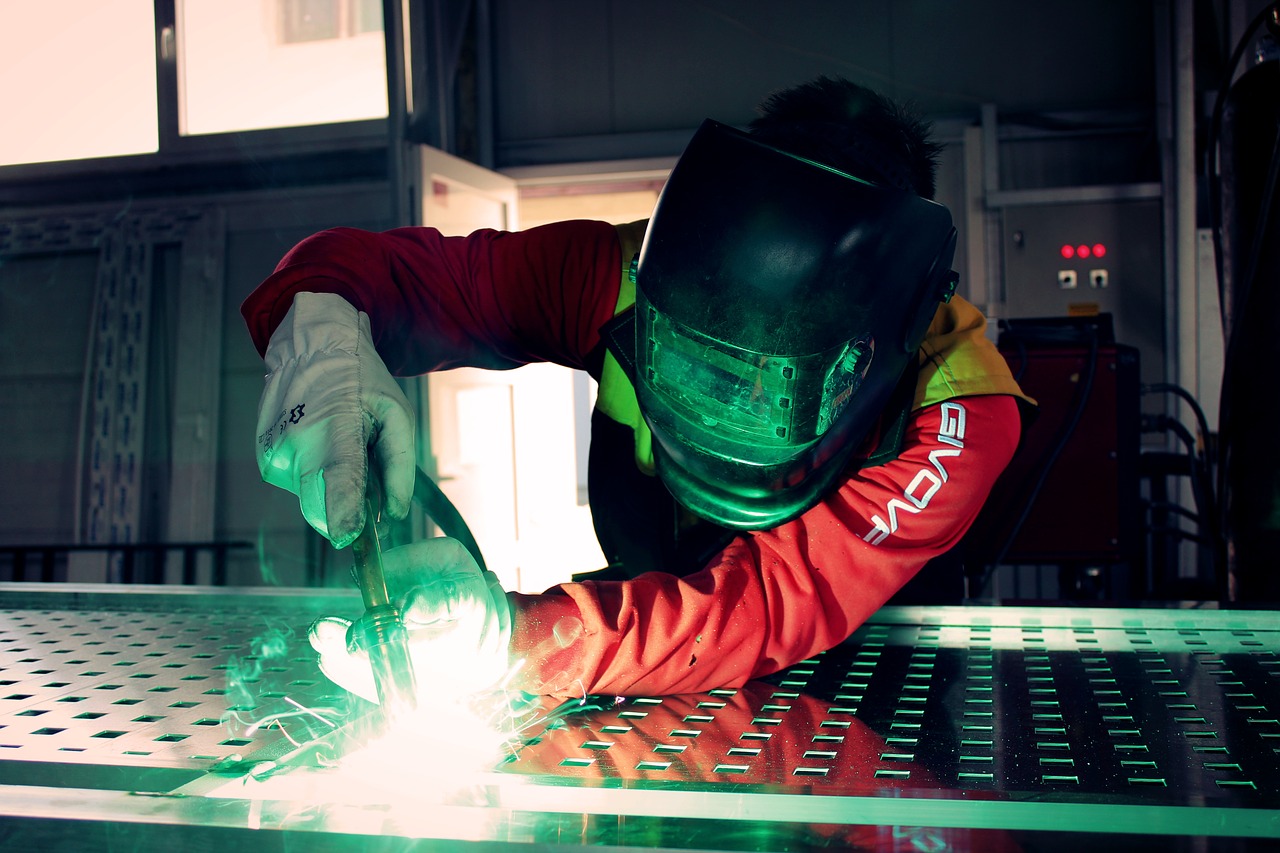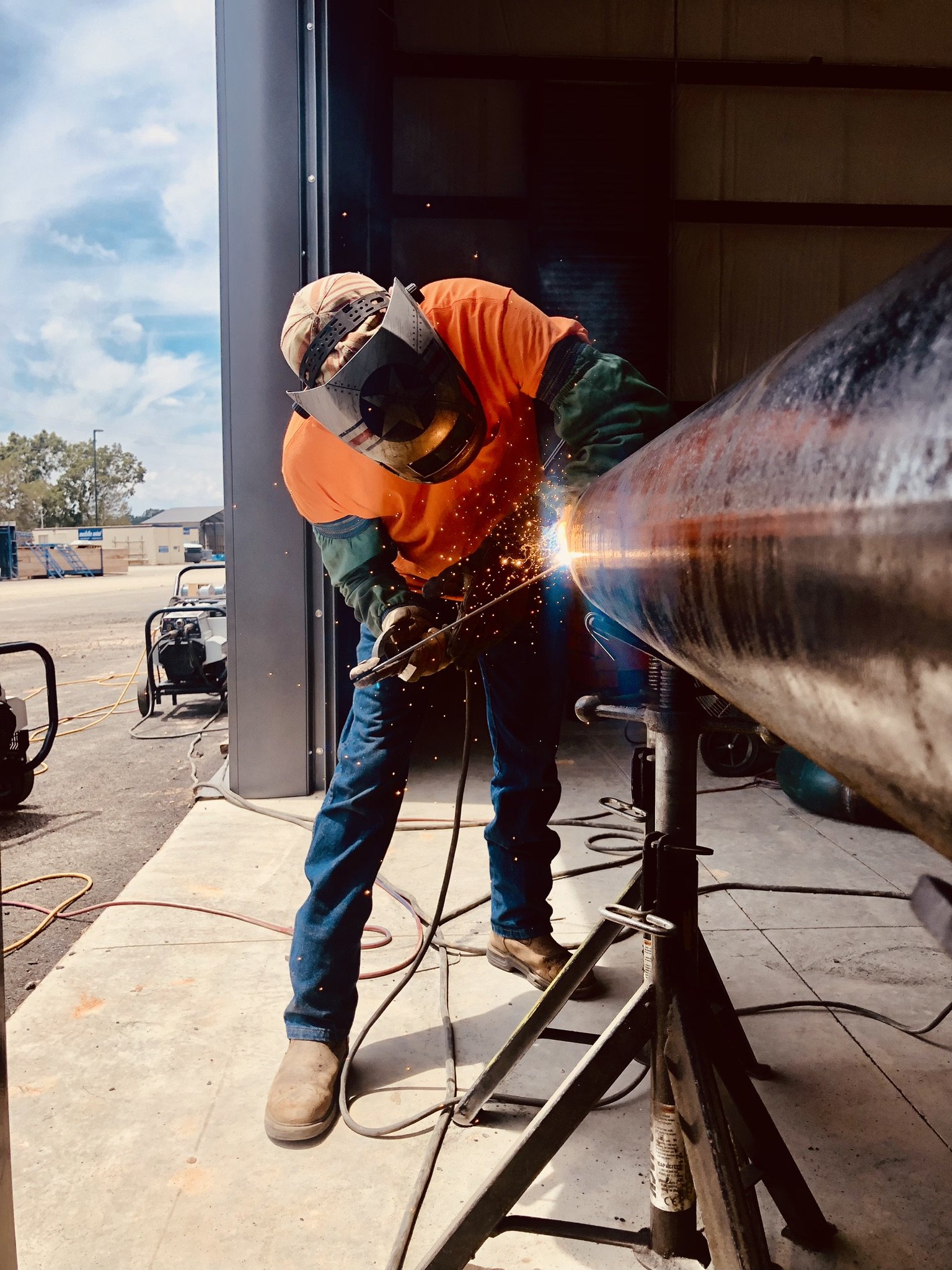Everything about Welding: Key Insights Into Techniques and Ideal Practices for Success
Welding includes a variety of techniques, each suited for certain materials and applications. Understanding these techniques, such as GMAW, SMAW, and TIG, is vital for achieving excellent results. The best devices and safety methods can not be neglected. As preparation and fixing play crucial duties in the welding procedure, understanding these elements can substantially improve the high quality of the final product. What are the key elements that guarantee an effective weld?
Recognizing Different Welding Strategies
Welding strategies encompass a range of techniques, each fit to specific applications and materials. Amongst one of the most common techniques are Gas Metal Arc Welding (GMAW), Protected Steel Arc Welding (SMAW), and Tungsten Inert Gas Welding (TIG) GMAW, also called MIG welding, is preferred for its speed and versatility, making it suitable for slim products. SMAW, or stick welding, is preferred for its simplicity and effectiveness in outside atmospheres, especially with thicker metals. TIG welding uses accuracy and control, making it ideal for elaborate work and non-ferrous metals (Montana Mobile Welding and Repair Fabrication). Each strategy has its distinct advantages and factors to consider, permitting welders to select the finest method based on the project's demands, material kind, and wanted outcomes. Understanding these strategies is important for successful welding
Important Welding Devices and Devices
While different welding strategies require certain skills, the ideal devices and devices are similarly crucial for attaining quality outcomes. Important welding devices includes welding equipments, which differ depending on the method-- such as MIG, TIG, or stick welding. Safety equipment, consisting of aprons, gloves, and headgears, warranties safety and security and comfort throughout the process. Additionally, clamps and components assist secure products in position, ensuring precision in welds. Consumables like welding poles, cord, and shielding gas are also crucial components that influence the high quality of the weld. Tools such as mills and cutters help with surface area prep work and post-weld completing, contributing to a specialist end result. Purchasing premium devices inevitably enhances the efficiency and effectiveness of welding jobs.
Safety And Security Practices in Welding
Appropriate security practices are vital in the welding industry to protect employees from possible dangers. Welders should use suitable personal protective tools (PPE), including safety helmets with correct shading, handwear covers, and flame-resistant apparel. Adequate air flow is important to lower direct exposure to dangerous fumes and gases created throughout the welding procedure. Additionally, workers should be learnt the proper handling of welding devices to avoid crashes. Fire safety and security steps, such as maintaining flammable products away from the welding area and having fire extinguishers easily available, are necessary. Normal evaluations of equipment and workspaces can aid identify prospective hazards prior to they result in mishaps. By sticking to these security practices, welders can produce a safer working setting and reduce threats linked with their profession.
Readying Products for Welding
Preparing products for welding is a vital action that greatly influences the high quality and honesty of the end product (Fabrication). Correct preparation involves cleaning the surfaces to get rid of contaminants such as dirt, rust, and oil, which can jeopardize the weld. Methods such as grinding, sanding, or making use of solvents are frequently utilized to achieve a tidy surface area. Furthermore, making certain that the products mesh well is crucial; gaps can result in weak welds. It's also vital to take into consideration the alignment and positioning of the parts, as this will affect the ease of welding and the final outcome. Picking the proper filler product and making certain compatibility with the base steels is crucial for achieving solid, long lasting welds.
Tips for Achieving High-Quality Welds
Achieving high-quality welds calls for attention to detail and adherence to finest methods throughout the welding process. Proper joint preparation is necessary, ensuring surfaces are free and clean from contaminants. Selecting the ideal filler product and welding technique based upon the base metals is vital for suitable bonding. Keeping constant traveling speed and angle while welding can avoid issues and advertise harmony. Furthermore, regulating warmth input is important; too much heat can bring about bending and damaged joints. If required, on a regular basis evaluating the welds during the process allows for prompt adjustments. Using ideal post-weld therapies, such as cleansing and stress and anxiety relief, can improve the sturdiness and honesty of the weld, inevitably making sure an effective end result.
Troubleshooting Typical Welding Issues
Welding often offers difficulties that can impact the quality and integrity of the end product. Common problems such as porosity, inconsistent weld grains, and overheating can arise, each calling for certain repairing techniques. Understanding these problems is crucial for welders to boost their skills and accomplish perfect outcomes.
Porosity Troubles Clarified
Although porosity can usually be forgotten, it remains a crucial problem in welding that can compromise the stability of an ended up item. Porosity refers to the existence of little gas pockets within the weld grain, which can lead and damage the joint to early failing. This issue normally develops from impurities, wetness, or improper shielding gas coverage during the welding process. To reduce porosity, welders need to validate that the base products are tidy and dry, make use of appropriate securing gases, and keep constant welding parameters. Routinely checking the equipment and atmosphere can also assist recognize prospective problems prior to they show up in the weld. Attending to porosity successfully is vital for achieving strong, resilient welds that satisfy top quality criteria.

Inconsistent Weld Beads
Irregular weld grains can substantially influence the top quality and strength of a finished item. Numerous elements add to this problem, including inappropriate traveling speed, inaccurate amperage setups, and inconsistent electrode angles. When the welder relocates too swiftly, a grain may appear narrow and lack penetration, while moving also slowly can trigger extreme accumulation. Furthermore, using the wrong amperage can cause either damaging or excessive spatter, both of which compromise weld honesty. The welder's method, such as inconsistent lantern activity, can additionally bring about uneven grain look. To minimize these issues, welders should focus on preserving steady, controlled activities and making sure proper equipment settings to accomplish uniformity in their welds. Consistency is crucial to accomplishing strong and trusted welds.
Overheating and Bending Issues
Extreme warm throughout the welding procedure can cause significant overheating and buckling concerns, influencing best mig welder under 500 the architectural integrity of the work surface. These problems often show up as distortion, which can endanger positioning and fit-up, making additional setting up challenging. Factors contributing to overheating consist of the selection of welding specifications, such as voltage and travel rate, in addition to the kind of product being bonded. To mitigate these problems, welders should preserve consistent travel rate and suitable heat input while keeping an eye on the workpiece temperature level. In addition, pre-heating or post-weld heat treatment can help alleviate anxieties triggered by rapid cooling - Montana Mobile Welding and Repair Belgrade Welding. Normal evaluation and adherence to finest practices are necessary in avoiding overheating and guaranteeing the long life and dependability of welded structures
Frequently Asked Inquiries
What Are the Profession Opportunities in the Welding Industry?
The welding industry provides varied profession possibilities, including settings as welders, engineers, inspectors, and instructors. Experts can work in production, building, aerospace, and automotive markets, gaining from strong need and competitive wages in numerous functions.
How Can I Enhance My Welding Rate Without Sacrificing High Quality?
To improve welding speed without giving up high quality, one need to practice efficient methods, maintain equipment, enhance settings, and enhance hand-eye control. Normal training and seeking feedback can also greatly add to achieving faster, high-quality welds.
What Qualifications Are Readily Available for Welders?
Many accreditations exist for welders, consisting of those from the American Welding Society (AWS), the National Center for Construction Education And Learning and Research (NCCER), and different industry-specific companies. These qualifications improve employability and demonstrate ability proficiency.
How Does Welding Influence the Characteristics of Metals?
Welding influences the homes of metals by her comment is here modifying their microstructure, which can cause adjustments in hardness, strength, and ductility. Warm input and cooling rates throughout the process substantially impact these material features.
Can I Bonded Dissimilar Metals With Each Other?
